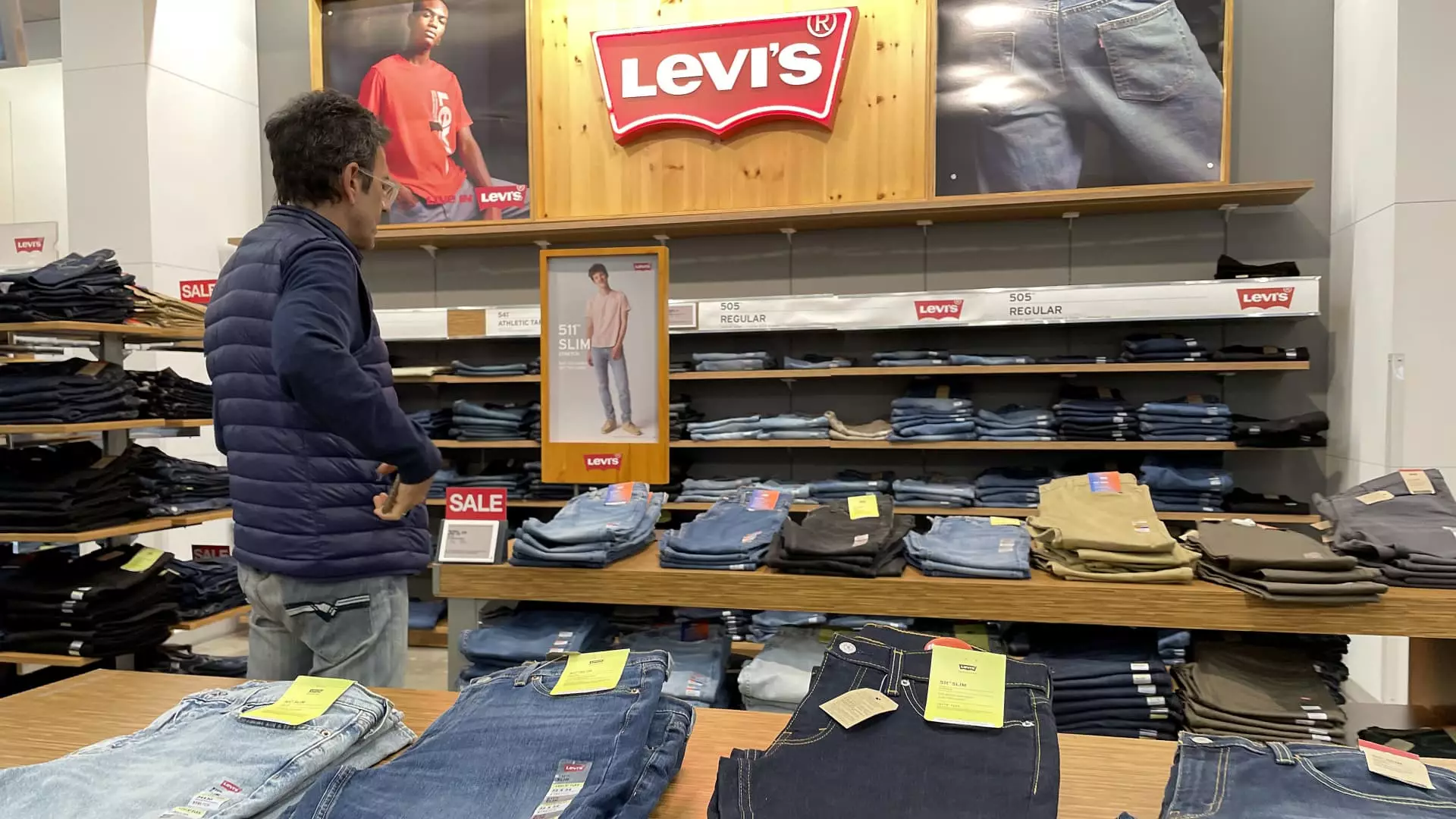Levi Strauss & Co. is witnessing a complex landscape marked by consumer enthusiasm for its iconic Levi’s jeans brand while simultaneously grappling with challenges stemming from its Dockers division. The denim giant’s announcement this week to potentially offload Dockers highlights the struggles the company faces despite notable improvements in its primary product line.
Levi’s Brand: A Bright Spot Amidst Challenges
Levi’s has recently reported a 5% increase in sales, the most substantial leap in two years, suggesting that consumer demand for denim remains robust. However, this positive performance could not mask the overall revenue stagnation, which came in below Wall Street expectations, leading to an over 8% drop in share prices during after-hours trading. Analysts had anticipated a revenue increase to $1.55 billion, but the company reported $1.52 billion instead—stagnant growth year-on-year.
Levi Strauss still enjoyed a net income increase, reporting $20.7 million—as compared to $9.6 million in the same timeframe last year—but one must wonder if this growth is sustainable in the competitive and often volatile fashion market. The projected earnings per share is reassuringly in line with expectations, but a reduction in revenue growth projections from 1%-3% to 1% is troubling, particularly when juxtaposed with analysts’ expectations of 2.3% growth. Such discrepancies raise caution flags about the company’s ability to maintain momentum, especially as fashion trends shift.
The Struggles of Dockers
The Dockers brand’s downward spiral continues to be a significant drag on Levi’s overall performance. Sales dropped 15% during the latest quarter, illustrating a stark contrast to the growing interest in denim products. Launched in 1986 as a stylish alternative to traditional jeans, Dockers’ khakis were once a wardrobe staple. Yet, the brand has struggled over the last few years, facing an identity crisis as the market shifts toward more casual and athleisure styles.
Levi’s Finance Chief Harmit Singh indicated that the decision to explore a sale of the Dockers brand reflects the long-term strategy to enhance profitability and lessen revenue volatility. By divesting a brand that has continued to underperform, Levi’s hopes to leverage its resources more efficiently in an increasingly competitive market. Such a move could free both Levi’s and Dockers to refocus their strategies and specializations, potentially unlocking value lost during their overlap.
Despite the struggles with Dockers, Levi’s is making noteworthy strides in bolstering its direct-to-consumer sales channel. This strategic pivot has resulted in a significant uptick in profitability, with direct sales climbing 10% overall, and e-commerce sales surging by 16%. By reducing its reliance on traditional wholesale partners, Levi’s capitalizes on higher margins and closer consumer relationships, gaining valuable insights through data collection.
The company’s gross margin saw an increase of 4.4 percentage points, attributed partially to lower cotton costs and smarter product management that minimized markdowns. Given that direct sales now account for 44% of total revenue, Levi’s aims to bolster this figure to 55%, which would provide a more favorable financial outlook and greater control over brand messaging and customer experiences.
To further its growth trajectory, Levi’s has been bold in its marketing endeavors, recently partnering with major cultural icons like Beyoncé. This collaboration not only boosts brand visibility but also reinforces Levi’s connection to contemporary culture, an element critical for maintaining relevance among younger consumers. By casting Beyoncé in its current campaign, Levi’s melds music with fashion, creating a narrative that aligns with contemporary consumer values and aspirations.
This demonstration of cultural connectivity is part of Levi’s strategy to resonate with customers on a deeper level—beyond mere transaction. CEO Michelle Gass emphasized that intertwining Levi’s identity with cultural icons like Beyoncé can help solidify the brand as a staple in consumers’ lives.
Navigating Global Challenges
Despite strong performances in specific markets, Levi’s has encountered difficulties in both the Americas and Asia. Notably, issues in China—impacted by macroeconomic headwinds and internal leadership changes—have hindered performance. Additionally, in the Americas, a cybersecurity breach at one of Levi’s primary wholesale partners in Mexico disrupted shipping timelines, compounding existing execution challenges.
As the company contends with these global intricacies, paired with fluctuating consumer preferences, Levi’s must remain agile and adaptive. The brand’s resilience will be pivotal in overcoming its current obstacles and harnessing the available opportunities in a rapidly evolving market.
While Levi Strauss & Co. navigates a multi-faceted landscape with bright spots in its denim business, the significant hurdles posed by the underperforming Dockers brand and external market challenges represent a need for strategic transformation. By focusing on direct sales, innovative marketing, and a careful reevaluation of brand portfolios, Levi’s aims to reclaim its footing in a competitive industry.

Leave a Reply